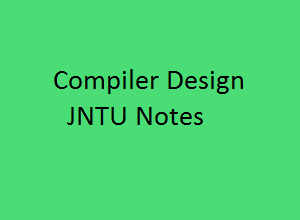- Piler design is probably the most mature computer science subject, it is different. An adult person develops more slowly and differently than a toddler or a teenager, and so does compiler design. The present book re ects that. Improvements to the book fall into two groups: presentation and content.
- PSG design data book full notes pdf download free V B Bhandari for Design of Machine elements book full notes pdf download Automata Compiler Design or Compiler Deisgn Notes, Presentations and ppt shows.

If you want any PDF of Compiler Design you are in the right place. At collectallpdf.blogspot.com, you can find any pdf you want. In this particular post, we are giving you access to download all PDFs of Compiler Design subject. Click The Download Link again and again to download the pdf.
I have taught an undergraduate compilers course for over a decade.In the last many years, I have used my own textbook 'Basics ofCompiler Design', which I have decided to make available online.

Permission to copy and print for personal use is granted.
Differences between editions
Each new edition has fixed errors and rephrased some explanations.Additionally, the 2008 edition added a chapter about analysis andoptimisation, the 2009 edition added a short chapter aboutinterpretation and is typeset in a slightly heavier font. The 2010edition represents the 10th anniversary of the book and has added achapter about memory management and an appendix about setnotation.
How to get Basics of Compiler DesignYou can download the book directly from this page by clicking onthe link below. The was previously also published through theprint-on-demand site Lulu.com, but this has been taken down, asSpringer Verlag has published a book based on chapters 1 - 10 ofBasics of Compiler Design. The 2010-edition of Basics of CompilerDesign will stay available on this page, but will not be updated anyfurther. Youcan find out more about the Springer book 'Introduction to CompilerDesign' here. The cover picture (shown left) is taken outside DIKU. The 2010 edition uses 189 × 246 mm paper format (Quarto).Earlier editions used a sligtly smaller format. Get the book contents (PDF)Get the wrap-around cover (PDF)Solutions to selected exercisesKnown misprintsIf you should find more misprints or other errors, please report these to me. |
DIKU, University of Copenhagen, Universitetsparken 1, DK-2100København Ø



Principles Of Compiler Design Pdf
E-mail: torbenm@diku.dk Telephone: (+45) 35 32 14 04 Fax: (+45) 35 32 14 01Principles Of Compiler Design Textbook Pdf
